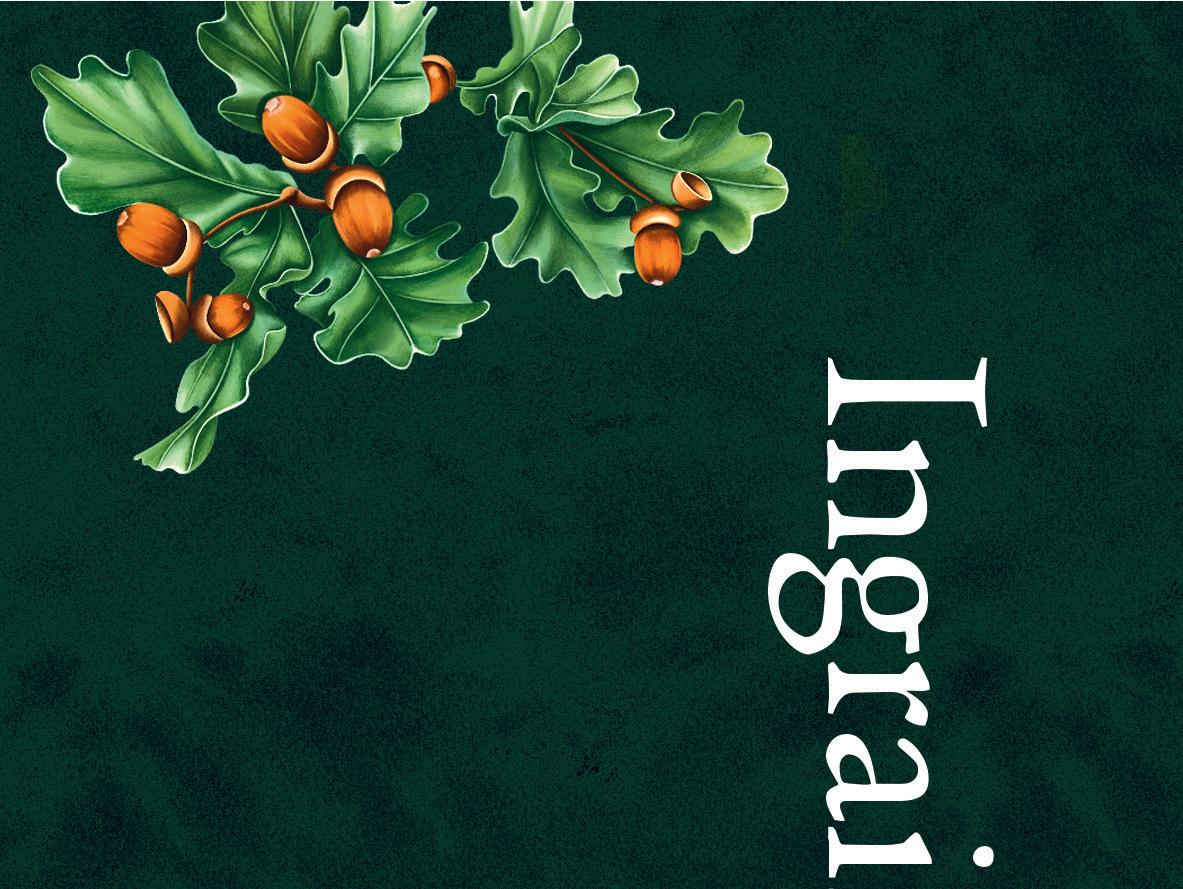


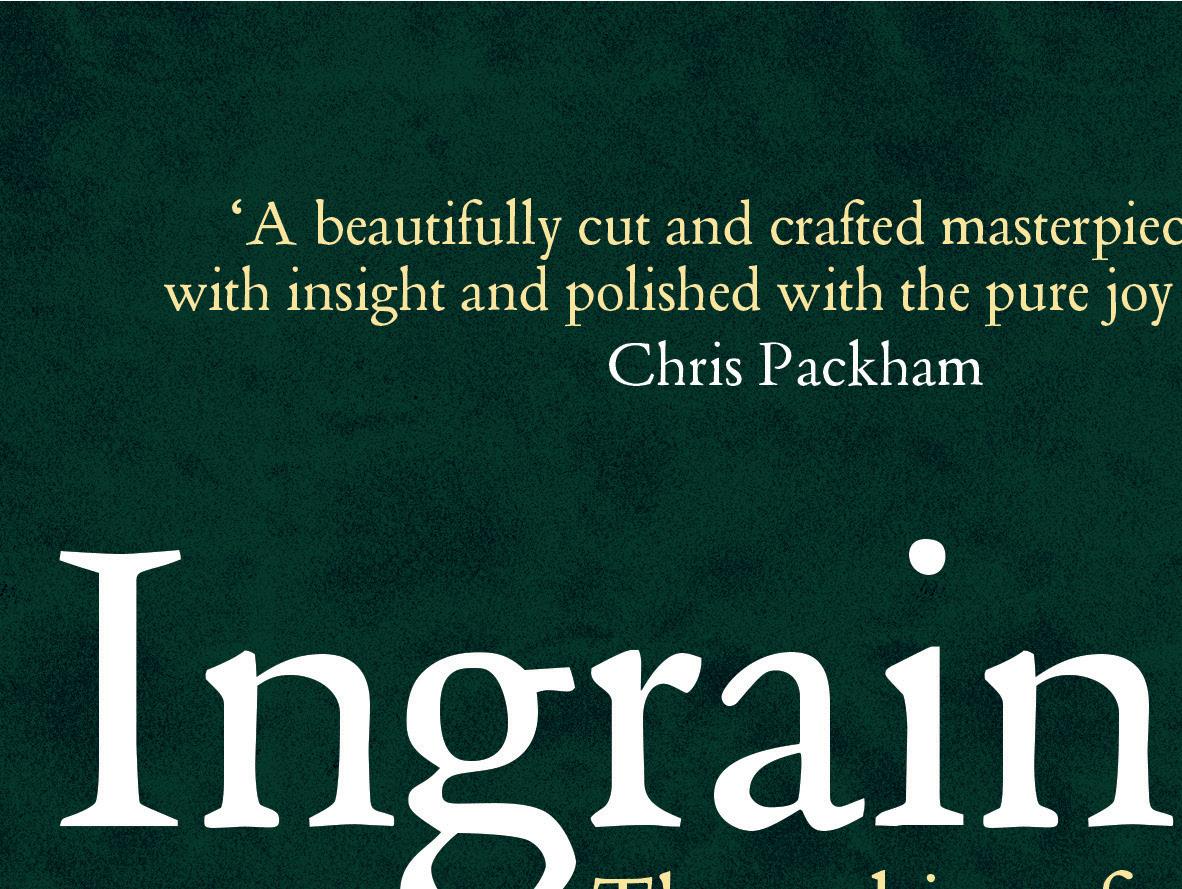
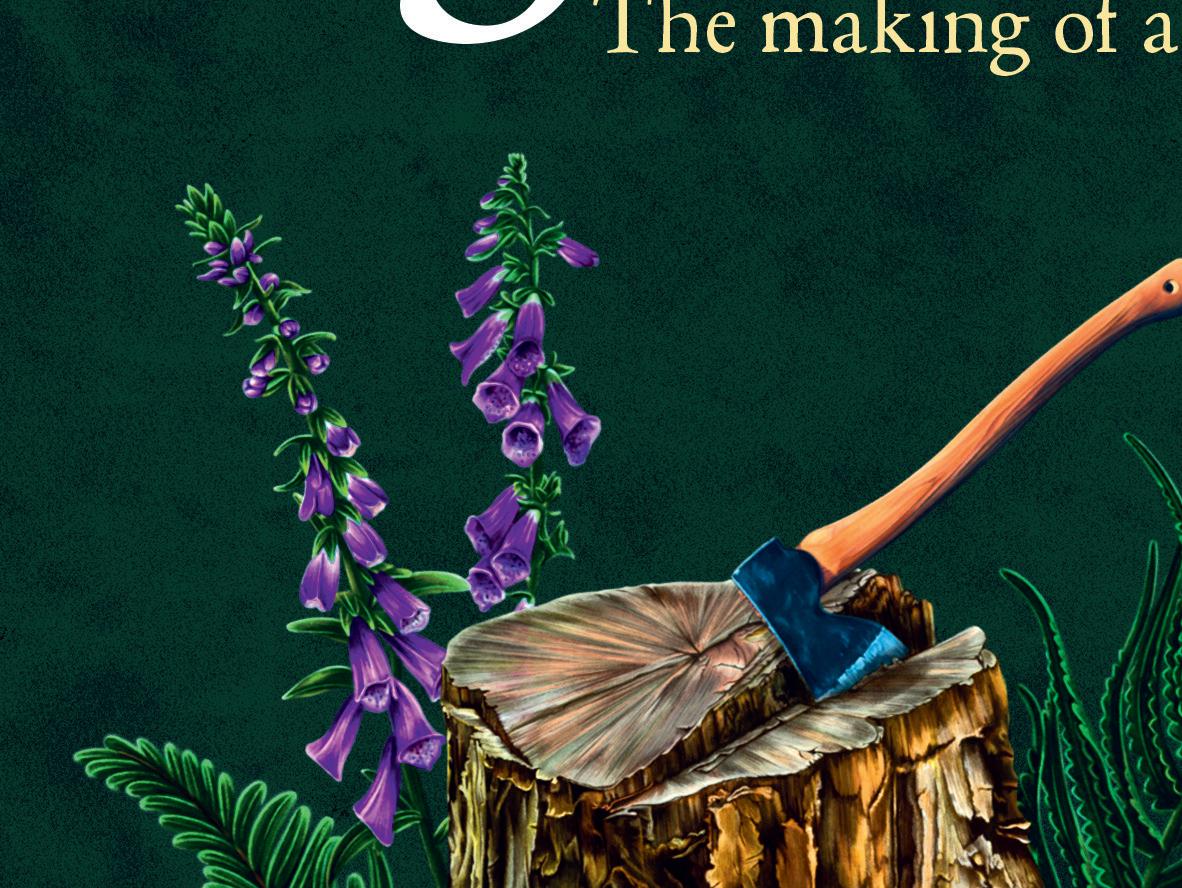
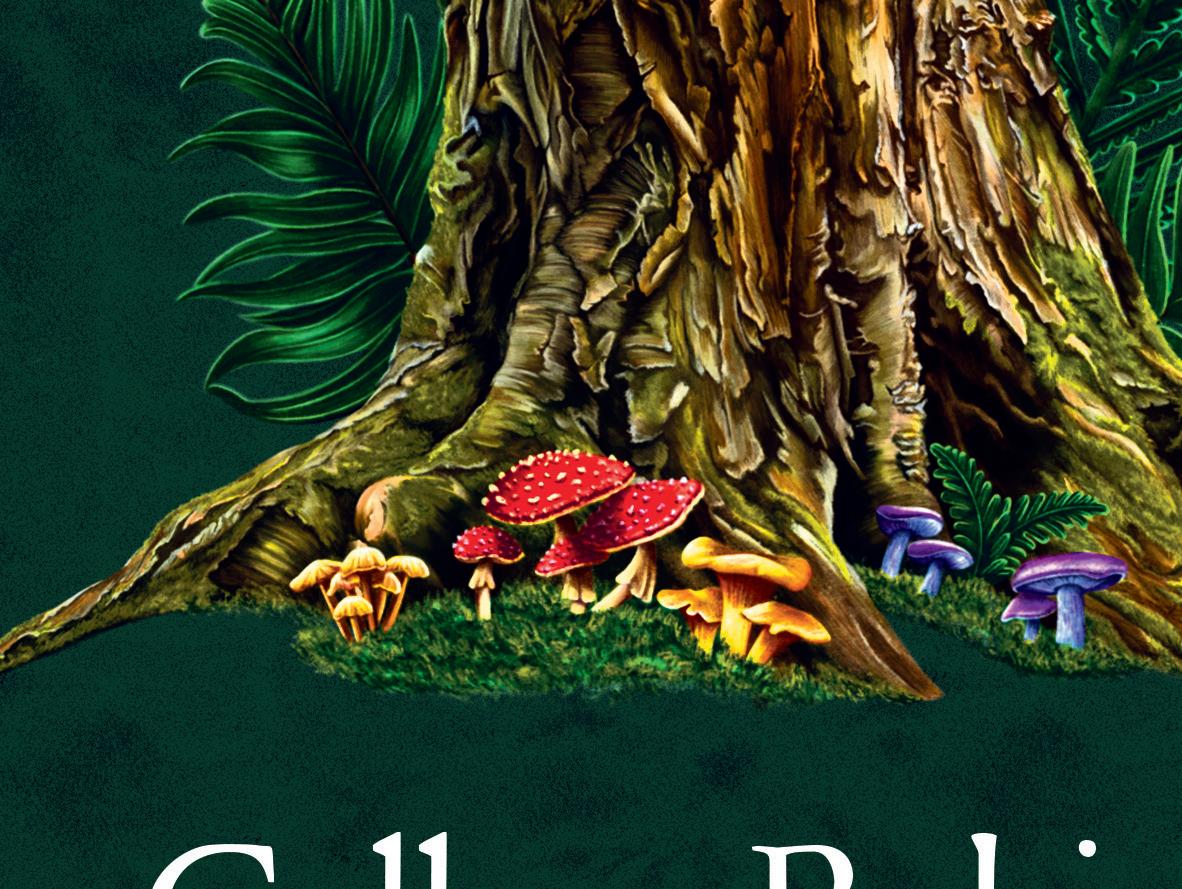
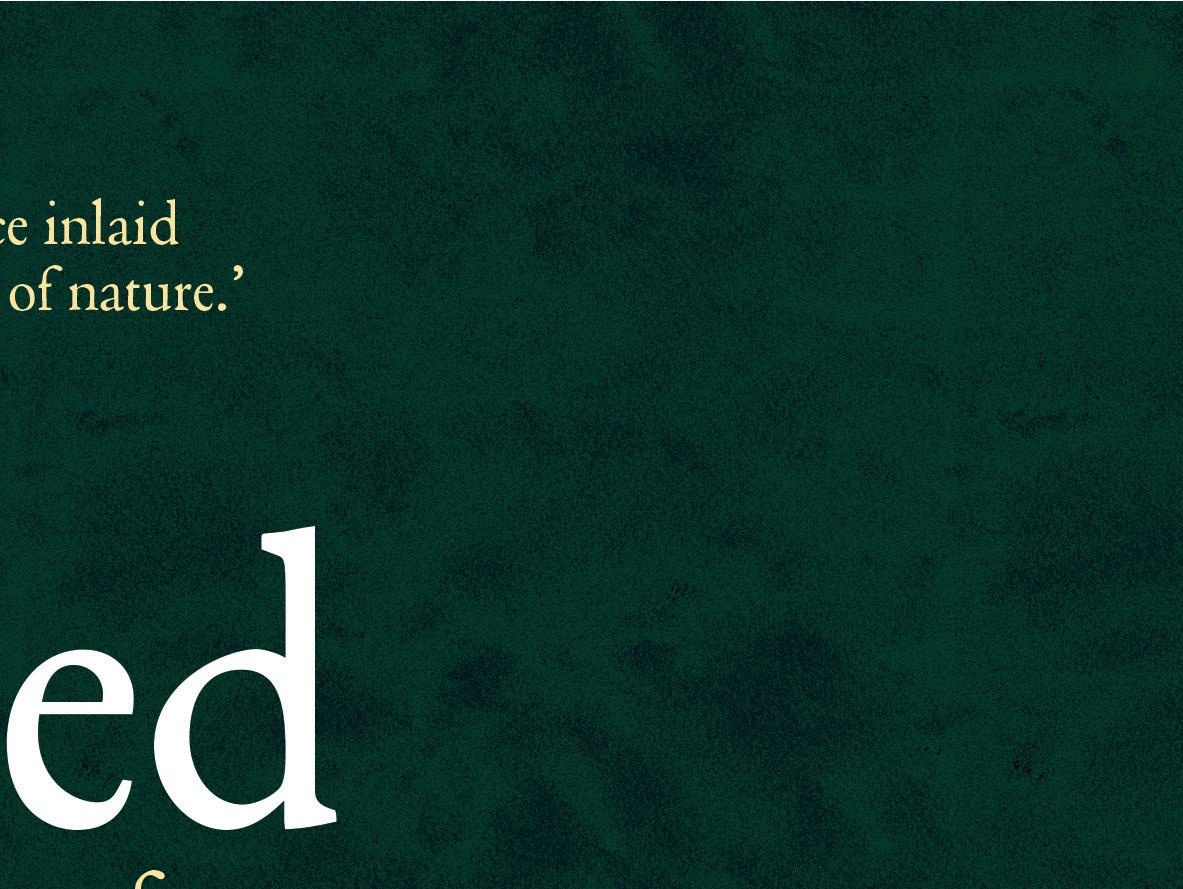
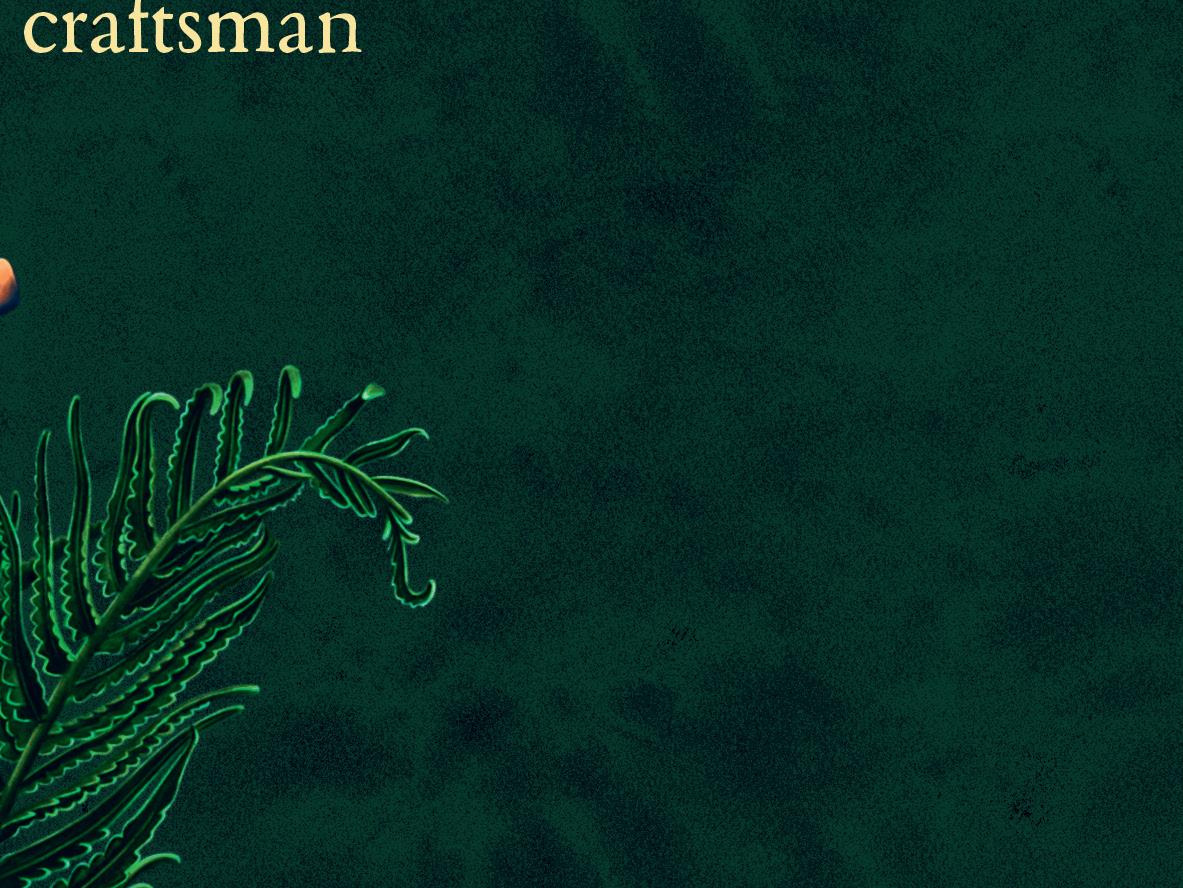
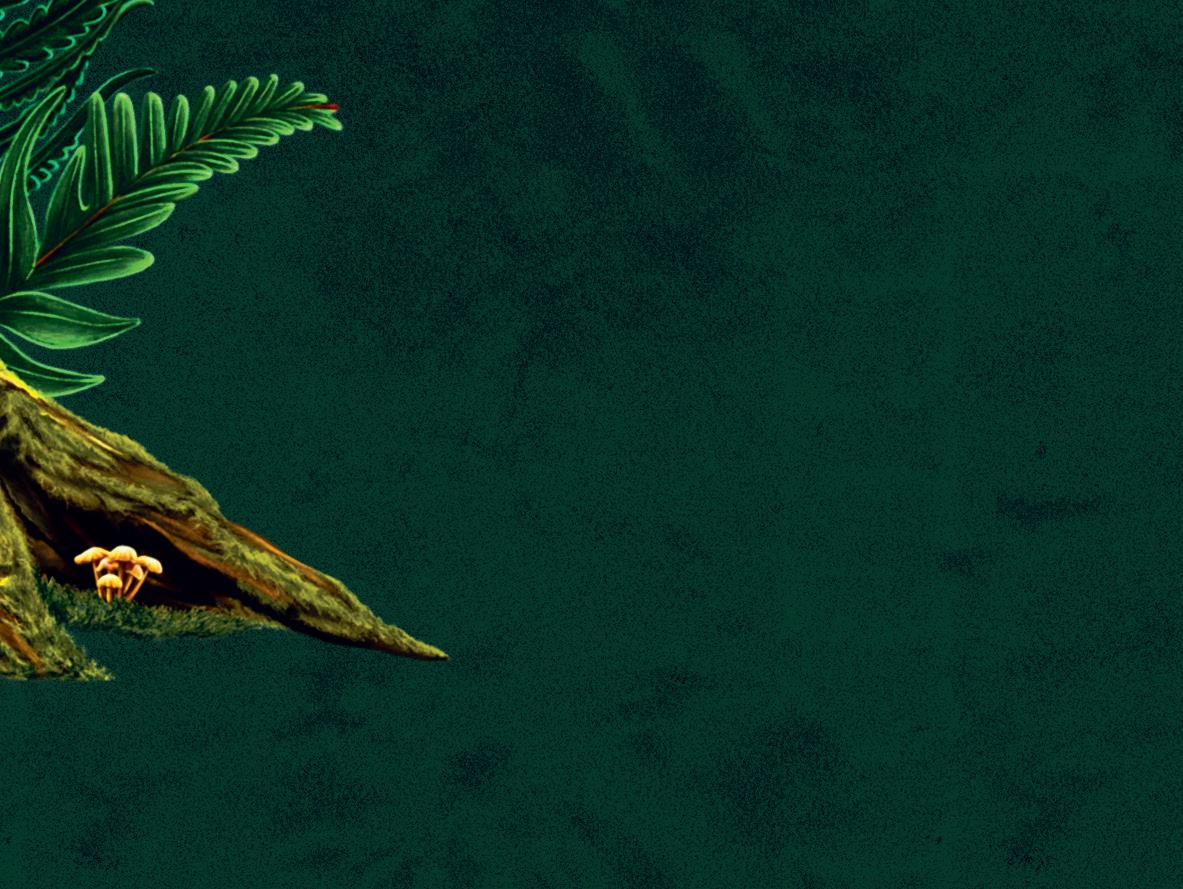












callum robinson
TRANSWORLD PUBLISHERS
Penguin Random House, One Embassy Gardens, 8 Viaduct Gardens, London sw11 7bw www.penguin.co.uk
Transworld is part of the Penguin Random House group of companies whose addresses can be found at global.penguinrandomhouse.com
First published in Great Britain in 2024 by Doubleday an imprint of Transworld Publishers
Copyright © Callum Robinson 2024 Woodcuts © David Robinson 2024
Callum Robinson has asserted his right under the Copyright, Designs and Patents Act 1988 to be identified as the author of this work.
This is a work of non-fiction based on the life, experiences and recollection of the author. However, in some cases names of people, places, dates, sequences and the detail of events have been changed, amalgamated or blended to reflect the author’s experiences while protecting the privacy of others. The author and publishers disclaim as far as the law allows any liability arising directly or indirectly from the use or misuse of any information contained in this book. The author has stated to the publishers that, except in such minor respects not affecting the substantial accuracy of the work, the contents of this book are true.
Every effort has been made to obtain the necessary permissions with reference to copyright material, both illustrative and quoted. We apologize for any omissions in this respect and will be pleased to make the appropriate acknowledgements in any future edition.
A CIP catalogue record for this book is available from the British Library.
isbn 9780857529756
Text design by Couper Street Type Co. Typeset in 12.5/18pt Garamond Premier Pro by Jouve (UK), Milton Keynes. Printed and bound in Great Britain by Clays Ltd, Elcograf S.p.A.
The authorized representative in the EEA is Penguin Random House Ireland, Morrison Chambers, 32 Nassau Street, Dublin d02 yh68
No part of this book may be used or reproduced in any manner for the purpose of training artificial intelligence technologies or systems. In accordance with Article 4(3) of the DSM Directive 2019/790, Penguin Random House expressly reserves this work from the text and data mining exception.
Penguin Random House is committed to a sustainable future for our business, our readers and our planet. This book is made from Forest Stewardship Council® certified paper.

‘A small compromise leads to another small compromise, and finally we wind up doing something that we do not really love. It’s a sneaky thing.’
– James Krenov, a cabinetmaker’s notebook
Picture the biggest tree you’ve ever seen, laid on its side and sliced lengthways into boards no thicker than expensive steaks. Every difficult year, every drought and every flood, all the minerals and pigments leached up from the particular spot in which it took root, the rippling shadows of a woodworm’s pinhole excavations, the relentless tension required to hold up those mighty limbs, and the torturous scarred stains from a barbed wire choker ohso gradually absorbed. It’s all there, folded into the heartwood. Centuries of character, as individual as a fingerprint, written in the figure of the grain and revealed by the teeth of the saw. Now, imagine there are hundreds of trees like this. Literally thousands of years of life and history, stacked together hugger-mugger. That they are all around you.
Climbing out of the Land Rover, the air is heavy with the scent of damp leaves and woodsmoke, the loud metallic tick-tick-ticking of the engine in the early morning mist. Pale birch trees, rhododendron scrub and walls of crumbling stone fringe the glade, and towering above them, a pair of hulking Scots pines lurk in
Ingrained their own long shadows, guarding the entrance to this hidden place. We stretch off the long hours on the road, stamping the life back into our feet, then without a word we assemble our kit. We rummage for thick blue marking crayons, clipboards and runic timber lists, we slip tape measures onto our belts. My father pulls on a battered felt hat, tucks a pencil behind his ear and squelches off into the yard.
Dominating the yard is a ramshackle cluster of post-and-beam sheds; these are the drying sheds, and to reach them we must skirt around several mighty logs. Ash, oak, sycamore and smooth grey elephantine beech are strewn haphazardly about, each awaiting their turn at the saw. They have such presence, these woodland behemoths. Such irrefutable dinosaur-haunch-heft. The fresh ones – those still close to half-filled with water – weigh several tonnes. I watch as my father runs a hand along the fissured bark of a huge ash log, as another man might caress a dog’s flank. As if to say: Good log.
Beneath their sagging tin roofs, the drying sheds’ walls are clad with slim spruce logs, roughly sawn into planks and spaced a handsbreadth apart. This is to encourage air circulation, critical to the wood’s curing process. Allowed to move freely around the freshly milled timber like this, the relentless Scottish wind will slowly wick away the moisture, a year for every inch of thickness, plus another for luck. In places the walls have been left entirely open to the elements – gaps just wide enough for a tractor’s forks, or a father and son, to enter. So, together, we duck into the gloom. Inside it is silent and still, and a lingering musky perfume
Raw Materials begins to invade our nostrils: earthy, mossy and barky. The soil underfoot is dry and fine as talcum powder, tamped down flat by countless tiny scurrying feet. This must be how it feels to creep into a fox’s earth or a rabbit’s warren. As we move further into the shed, the smell gets stronger, until it is more than a smell; it is an overpowering presence. As if the forest itself has grabbed me by the lapels and is exhaling deeply into my face. This is because we are surrounded, almost comically outnumbered, by trees.
These days, of course, it is entirely possible to order your timber from some distant faceless sawmill or builders’ merchant. To have it delivered in neat, square-edged packs of uniform planks, sight unseen. Elegant, clean-limbed hardwoods from Europe, prodigious giants from the Pacific Northwest, iron-hard exotics from South America and Africa and close-grained, slow-growing birch from the fringes of the Arctic Circle. From aspen to zebrawood, purpleheart to ponderosa pine, and a hundred species in between. With a modern crane-armed truck, a skilled delivery driver can actually lift the stuff directly into your workshop. This is far more convenient, simpler and faster than selecting in person. And because the timber from big suppliers is commercially logged, kiln-dried, treated and graded, there’s considerably less risk that hidden rot or unexpected colour may be lurking inside as well. But just because it’s easier, cheaper and less chancy . . . doesn’t necessarily mean it’s better.
Ask any chef worth their salt: would they rather get that expert nose stuck right in at the fish market before the sun’s even glanced up from the pillow, or unpack the goods from an insulated box?
Forage for chanterelles in rain-sodden glades, or peel away the cellophane behind closed doors? There are exceptions, naturally, but they’ll tell you: when it comes to sourcing the finest ingredients, perfect in ways that can’t be defined or categorized, with qualities that must be perceived rather than picked from a catalogue, there are times when it pays to get your hands dirty. And Ben’s timberyard, in the far upper reaches of northern Scotland, is a place to get your hands very dirty indeed.
This yard has no sign, no digital footprint, it doesn’t even have a phone. Secreted away at the end of an unmarked track, five winding miles from the nearest village of any size, its name and whereabouts have spread quietly, organically. Whispered on the lips of tree surgeons, furniture makers, wide-eyed woodturners and canny farmers. For all intents and purposes, it might as well be invisible. And for those of us who do know of it, there’s a very good reason to try and keep it that way. Much of Ben’s stock comes from old-growth hardwoods, some that were many hundreds of years old when they fell. Trees like this are uncommon, protected, not the sort of things that come down every day. But because the turnover here is slow and the sheds are small, this wood, when it comes, has a habit of piling up – the old being gradually buried beneath the new. Storm-blown, wizened and gnarled, and often very large indeed, these are trees that found root in an unforgiving environment and somehow scratched out a living. Trees, that is to say, of distinctive character. And whilst they certainly aren’t to everyone’s tastes, as the world grows ever more manicured, to some this individuality is a rare and precious thing.
All around me, in all shapes and sizes and every conceivable cranny, hundreds of the straight, branchless lower trunks of trees are piled twice my height. Where there is no space left to put them, they hang precariously from heavy canvas slings. Each has been sliced lengthways and then carefully reconstructed into stacks of planks that resemble the full log in the round. In this way the even pressure of the boards, spaced with dozens of slim wooden sticks – imaginatively named ‘stickers’ – and tightly lashed together, helps to keep them flat as they slowly air-dry. These are plain, through-and-through or slash-sawn logs. But bound back together again like this, they are known to many as boules.
Boules are monstrous, magnetic objects, and yet there is something fantastically cartoonish about those neatly splayed slices – so like a log in the first moments of an explosion you can almost imagine Wile E. Coyote himself slamming home the detonator’s plunger. But it isn’t simply their appearance that’s enchanting . . . it’s what might be locked away inside.
What did the world look like when these trees first broke through the soil? How many hard years and epic storms might they have weathered? Who might have climbed in their branches, sheltered beneath their canopies, carved a lover’s name into their living flesh? And how many lives depended on them over the years? For a native oak – part of the weft and weave of the British Isles’ landscape for millennia – this number is all but incalculable. Mammals, birds and bats, butterflies, moths, insects and plants; thousands of species are supported, and over three hundred
Ingrained
depend upon the oak for their survival. As Robert Macfarlane has written, weighing an acorn in his palm, ‘I hold in my hand not a single tree, but a community-to-be, a world-in-waiting.’ Think of that.
From outside, we hear the reluctant stutter-grumble of a chainsaw being coaxed into life, drawing us back to the task at hand. Following our ears, we pick our way through the narrow alleys that cut canyonlike between the towering stacks until we are back out in the light.
With its perpetually smouldering bonfire, antique machinery and strutting half-wild chickens, Ben’s yard feels unchanged or (more likely) unnoticed by time. There are tall brimming firewood pens – timber-framed and wire-mesh-sided so the split logs can air-dry – great rusting blades, billhooks and sickles dangling from rafters, dented enamel mugs and beer cans from another age sprouting like brightly coloured puffballs after rain. I wouldn’t be at all surprised to uncover a moonshine still bubbling away behind a sheet of corrugated iron, or to find myself propositioned by a poacher, his pockets bulging with rabbits fresh from the snare. It’s the sort of place that Jack London might have conjured, Butch Cassidy or Huck Finn holed up in. The sort of place I could lose my father in for a month.
Between the carcasses of two ancient Land Rovers that are slowly being reclaimed by the earth, timber in process is loosely stacked. Fat chunks of pine, fir, spruce and oak, for fencing, construction and green-oak building. The ragged ends of freshcut timber peek out from under a grubby canvas tarp, coarsely
textured and pinkish-yellow, oozing resin as only coniferous wood does. Pulling back the covers, I crouch and run the soft meat of my thumb over a board’s blade-riffled surface. The sawdust is granular and damp to the touch, like coffee grounds between my fingers. It is Douglas fir – the ‘Oregon pine’ – a North American emigrant and a vigorous one at that. Ripped into planks for cladding and fencing by the teeth of the yard’s mean old saw. Like its neighbour from the Pacific Northwest, the Sitka spruce, these trees are capable of growing almost twice as fast as anything native to the UK – in the right conditions, close to a metre and a half per year. Small wonder, then, that after just two hundred years, the pair already accounts for more than half our commercial forestry.
When we come upon him, Ben is working a twenty-inch blade through a log held fast in a sawhorse, knee-deep in a pile of freshly chopped firewood. Pine shrapnel and blue smoke belch from the machine with a noise like a million angry wasps. The sweet smell of sap mingling with the petrol’s heady fumes. His ageing Alaskan Mill – the mobile system of cables, wedges and metal braces that operates the far larger, slab-milling chainsaw – sits idle beside him for now.
Like his yard, the man is remarkable to survey. Rail-thin, sinewy, somewhere, I would estimate, between sixty and three hundred years old. Today he’s sporting chunky logger’s boots, armoured safety trousers suspended by heavy braces and a threadbare flannel shirt so permeated with oil, grime and sawdust it could probably stand up on its own. From under his hardhat,
errant wisps of yellow hair escape like smoke. A Quentin Blake illustration with a chainsaw.
As we wander over, he kills the engine, kicks his way clear of the log pile and lifts his visor. His voice, when he speaks, is surprisingly high and soporific, its foxy intonation suggesting I may just have found my poacher. ‘Aye . . .’ he says, softly. ‘And what can I do for you lads today?’
My father gets immediately down to business, checking off his list, cocking the occasional eyebrow at Ben, his pencil dancing like a conductor’s baton. The sawyer considers each item thoughtfully, saying little, leaning on his sawhorse. Until, that is, my father reaches the bottom of his clipboard, the main event, and the real reason we are here. ‘I need something big,’ he says. ‘Something . . . that feels like water.’ Ben’s eyes narrow a little at this, the very act seeming to conjure a wry smile. ‘Come wi’ me.’
A skinny yard dog tracks us warily, flitting like a wraith, materializing between rusting oil drums and high banks of creosote-soaked railway sleepers. Its eyes never leave us. Ben moves with a feline ease, padding down a narrow passageway between the backs of two sheds. We pass the rotting hollow trunk of an oak, broad as a water butt, and a rack that lists with hoarded burrs, hunkered down like fat warty toads overwintering. Ben pauses, then dodges right and drags open a huge door built into the shed’s cladding. Inside, pulling off a leather glove and patting his chest for tobacco, his weathered features are halfhidden, bathed in shadow. But catching his eye, we follow his nod towards a high stack of timber. And a-treasure hunting we go.
You never quite know what you’ll find in a place like this. Just as Ben didn’t know what he’d find when he first dragged his saw through the newly felled tree. And that’s the thrill of it. The same gambler’s frisson that once drew countless gold-fevered prospectors over lethal mountain passes, kept them bent-double down brutal Klondike shafts and panning over freezing Yukon rivers. The terrible, irresistible allure of what if.
Squeezing down a treacherous corridor, I position myself at the far end, and together my father and I begin to work our way through the uppermost elm boule. In the confined space it’s awkward and unwieldy, a thoroughly back-threatening business. But it’s not our first time. We move quickly, smoothly and collaboratively, glancing at each board in turn before placing it gingerly down. Knowing from bitter experience the terrible clubbing that fingers will cop if both ends are not dropped simultaneously. Anything with even a hint of potential we lay to one side. But the wood’s surfaces are rough and dry, thickly coated with years of caked-on sawdust and grime, making them difficult to read. It is almost as if they are bound in waxed butcher’s paper. So often it is instinct, a feeling, as much as anything else, that alerts us to a contender or condemns a reject.
With a practised flick of his thumb, and an oily snick, my father unclasps his lock-knife. I watch as he scrapes down to the clean flesh of the topmost board. But even in the shed’s gloom we can see the wood is far too pale. So pale, in fact, that I’m not even entirely sure it is elm. With wild wood like this, it’s not always easy to tell. What we are looking for is dark, brooding, virulently
Ingrained
swirling grain. Rich colour that will only deepen when the wood’s pores are saturated with oil, suggesting dense timber that will work finely and take a finish well. It may be that this tree came down at the wrong time of year, when the sap was high, discolouring the timber. The ground in which it found root might not have been sufficiently nutritious. Or it could just be sickly, the insidious scourge of Dutch elm disease creeping in. But to me it lacks weight, too. Something my father can’t fail to have noticed. We want heavy timber, the heavier the better – presuming it’s dry, perhaps the best portent of density there is. Ben will undoubtedly know more; his knowledge of the stock is encyclopaedic. But looking up I can see that he is off pottering around well out of earshot. So, leaving my father to his scraping, I haul myself up onto higher ground and begin to scramble through the sheds alone.
Years of slipshod restacking have left traps and hidden deadfalls everywhere. With the toes of my boots groping for purchase on the teetering piles of boards, I skirt along minute ledges, twist around splintery uprights, kneel and crawl and high-step over shadowy crevices. All too aware that, at any moment, several tonnes of timber might come crashing down, crushing my bones like twigs. My eyes, though, are busily scanning – not just for likely timber but for stray nails, precariously hanging logs and savage, rusting blades – so it is my hands and feet that must probe for disaster. Feeling around for that one loose board, the badly balanced or the poorly secured, that might initiate an avalanche. Huddled in this close, I am struck again by the smells. They are markedly different to the open yard. Gone are the high lush
resinous notes of freshly sawn softwood, damp grass and petrol. Replaced by a dry, earthy, fungal miasma. In some corners I catch the sharp tang of ammonia, where rot and woodland creatures have crept in and found a hiding place, and in others, pockets of cedar’s spicy sweetness. It is an ensemble piece, and the aroma somehow of great age. And there’s so much of the bloody stuff that it’s difficult to focus on. Soon though, as light shafts in through the many gaps in the shed’s rough walls and my eyes become accustomed to the gloom, the silhouettes sharpen into forms I recognize.
And all I can see is possibility.
There is rich, golden oak, dense and heavy as bullion, skilfully wrought by carpenters for three thousand years. So implacably hard that its mighty structures endure for centuries – from the latticework roof of Notre Dame’s doomed twelfth-century cathedral, so intricate and comprising so many individual oaks its carpenters nicknamed it the Forest, to Nelson’s flagship and Westminster Hall’s mighty seven-hundred-tonne hammer-beam ceiling. There is ghostly, almost luminescent sycamore. Fecund and prolific, a rampant tree. One that, according to tradition, must be cut in the light of the full moon. There is vivid-orange yew, ancient, supple and immensely strong. Before the introduction of composites, the bowmaker’s timber of choice. In the right hands, a wood that was capable of propelling an armourpiercing arrow the length of three football pitches, making it the stuff of battlefield nightmares and tipping the scales of fate for England’s armies for two hundred years. There is hard maple,
Ingrained
sweet chestnut, black walnut and great wide immovable slabs of flesh-coloured beech. There is tense, fretful, crimson cherry. Beautiful, but so shot through with splits and flaws that it’s next to useless. And then there is elm, the tenacious swaggering dandy of the forest. Decimated by disease, with some sixty million trees gone in the UK alone since the 1960s. But resilient. Surviving, like a forty-a-day whisky-sipping octogenarian Highlander, for reasons that science still cannot entirely explain.
Flipping a narrow elm board from the nearest stack, I carefully brush away the dirt from the surface with my palm. Waiting – half wincing – for the hidden splinter’s bite that mercifully does not come. The board is far too small for my father’s purposes, but it is still rather beautiful. Honeyed browns and swirling reds, slashed through with greens and purples. Colours and features that are just faintly visible beneath its dust-caked surfaces. Pressing my thumbnail into the wood’s flesh, I scrape and drag but it leaves no mark. Even elm so young as this is incredibly tough. Its high tensile strength demanding the very sharpest of tools to work. So durable, in fact, that it was once used to make dock pilings and cartwheel hubs, and even bored out to serve as water pipes in major cities. Elm was the coffin tree too. And the hanging tree.
Several of the board’s companions bear the chalk-scrawled hieroglyphics of earlier treasure seekers. 6 LEGS , DRAWER FRONTS , NO !! For a moment I scan for initials I recognize, or my father’s distinctive architectural block capitals. And as I do, my eye falls on some wider stock, a little way off to the side. This will be more to the old man’s liking. Half-heartedly, I try to lift
one of the giant slabs, but it doesn’t even budge. They are all far too heavy, interlocked and awkwardly positioned to risk moving alone. And in any case, it is probably still on the small side. The kind of things my father is really after are giants up to five feet across. Boards that will each weigh close to a hundred kilos – two hundred if fresh-sawn.
I catch sight of his distinctive shape further down the shed, moving in the shadows, and watch for a moment. He disappears from view, reappearing again seconds later, high up and stooped beneath the beams. Quick-drawing his tape measure, flicking open his knife in single fluid motions. Willing the wood to be what he needs. Utterly absorbed.
Magical as it is to clamber recklessly amongst all this history, for me there is a melancholy about it too. It’s been a long time since I worked with this kind of wild wood. Since I, or any of my team, had the chance to cut a gem from this much rough. Coming from such a small independent sawmill, and being air-dried, it lacks the certification it needs to be exported, pretty well essential for a business like mine. At a yard like this, the only paperwork you’re likely to see will be carefully rolled around a pinch of tobacco, or a grubby envelope stuffed with cash. To Ben and those like him, trust and a handshake mean far more than fine print, and I’m okay with that. But without some cast-iron documentation to prove the wood’s provenance, that it’s been treated and kilndried (slow-cooked at a low temperature, to draw out the last of the moisture and kill any lurking beasties) and that its characteristics are predictable, it is unlikely ever to leave these shores.
Like unpasteurized cheese, raw shellfish or beef on the bone, it’s simply got too much individuality. Too much risk.
Support staff, that’s all I am today. Here to hunt and haul. And though my eye is undoubtedly keener than most, it isn’t roaming with anything like the same skill or care as my father’s. True, we’re both looking for pretty, dense, dry and rot-free timber. Wood that won’t buckle and contort the moment a blade cuts into it, unleashing the tension that may be hidden within. If it has been dried too quickly, or improperly stacked, or if it has spent its life stooped against strong prevailing winds and developed thick muscular tension-wood to compensate, a sawcut might begin to close almost immediately around a powerfully spinning blade. And that you do not want. But my father’s is an artist’s eye as much as a craftsman’s, and it can see other things too – things that mine cannot. With his hands and face almost intimately close to the boards, he’s trying to divine the ebb and flow of the grain. To see, and to see past, the flaws. To intuit beneath the shrouds of grime the traces of a scene, a movement, or simply an energy. Something he can coax out and bring to life with his carving chisels.
It’s not new, this carving; he’s always dabbled. A scuttling dormouse here, an ear of wheat or an initial there. The Gaelic or Latin in-joke, like a street artist’s tag on a finely crafted kitchen, whether the client realized it was coming or not. Lately, though, things have progressed far beyond mere embellishment. Beyond what even he probably thought was possible. He loves all this, always has, but the carving work has ignited something new, something . . . incendiary. And if he thinks he’s found what
he’s looking for, his reaction will be that of a child discovering a yearned-for Christmas present under the tree: a mix of pure excitement tinged with wide- eyed disbelief. It’s something I haven’t been able to feel for a long time. If I ever could.
With this thought jangling in my head, I venture further out towards the fringes than usual, beyond the big main stacks, into the ancient and the rarely sifted outliers. I shimmy down a gap that’s narrow even by Ben’s standards, shins and thighs grazed and bruised by the bristling ends of forgotten stickers. Picking my way carefully over the loose and jumbled boards, my eye barely registers it. But something, glimpsed just for a moment, is out of place. I shuffle back, and there it is again. Silhouetted by the light slanting in through the walls. The perfect waney edge of a fully strapped boule. A boule that should not really be here.
Sheets of corrugated iron are piled against the timber, all but concealing it. It is obscured too by sawn and stacked softwood logs, old fenceposts and bearers, broken stickers, weathered tarpaulins and heavy straps that have been dumped on top. It feels as if it has not been touched for years, perhaps even decades. Clearing away the mess takes time, but soon I am dragging off the last of the sharp- edged metal panels, revealing the neatly spaced sides of the boards. Brushing away the dirt and getting in close, I can see that it’s not elm, but oak.
And what oak.
Without really knowing why, I shout my father over, and despite his protestations, we try to dig out the first slab. The board is at least two inches thick and seriously heavy. ‘Couldn’t
find anything a bit more difficult to get at?’ he wheezes, twisting and gurning – but grinning. I just grit my teeth and try to remember to lift with my knees. Together we grumble and tangle, swear and snarl, but eventually manage to hoist the great thing up and over the shed’s tangled chaos until we have it safely out into the light of the yard.
‘Tough old life that fella had,’ Ben says, having softly appeared. His tongue slides along a cigarette paper and his fingers twist. ‘Hundred, hundred and fifty years old I’d say. And not an easy one among ’em.’ There is a crunch, a spark, a sweet plume of Virginian tobacco. ‘Aye,’ he says, ‘a tree of considerable character.’
‘Character!? ’ With sickening speed my father’s knife is out again as he erupts, the wicked point digging into one of the board’s many shakes – the deeply riven fault lines, like cracks in the skin of old hands – that streak across the wood’s surface. His experienced fingers probe for flaws that may run through half the log, lingering on the weeping blue-black stains where fencing wire and horseshoe nails have reacted with the tannins and bled into the grain. Grumbling wordlessly to himself, he pokes at fissures and ragged holes and the dark bruises of knots as big as fists, where limbs have broken off leaving scars that are brittle and useless as cracked ceramic. And all the while those bushy eyebrows of his dance with contempt. Silently communicating what he’s too polite to say out loud in front of Ben.
The eyebrows are right of course. Peppered with the scrapes and bruises, dents and half-healed wounds of what has clearly been a hard fighting life, the oak has the face of an ageing football
hooligan. Aesthetically, there isn’t much to love. There is something else, though . . . a sensation I can’t quite articulate. But running my hands over the board, caressing the tiny ridges riven by the saw, feeling the shape and the texture, the live edges – and the attitude – I do know one thing: I know that it makes me smile.
Down on my knees in the damp grass, I lift the great slab up onto one edge, getting an eye along the length of it. Even for oak – the heaviest of our native timbers – the weight is striking. But it feels dry, so density is likely the reason. It must just have grown very slowly. Battled, as Ben suggests, for every last inch. There’s not much twist or bend, though, and what little there is can easily be accounted for in the board’s thickness. Even if I must lose a good deal of it in the process, I know I should be able to safely flatten it out. Dropping it down again with a mighty thud, I inspect its swirling grain more closely, seeing only now that it is dappled with tiny brown catspaw markings. As if a mob of muddy kittens has been playing on its surface. Beauty is difficult to define . . . but there’s certainly no denying this tree has character to spare.
Twenty minutes later, strained and sweating, we’ve got all six of the boards dragged out. Each is at least two inches thick, a little over two-and-a-half metres long and as broad as I am. The colour is pale gold, and flecked as they are with dark brown, they have the look of chocolate chip shortbread. Much to my father’s amusement, Ben even tries his luck with the outermost boards: the final pair, where the tree’s concave surfaces are still covered with bark and the thin slivers of solid timber are virtually useless.
‘Surely’, he says, over my father’s wild hooting, ‘you’ll be wanting the whole family?’ But I am barely listening. With the boards all standing now, leaning against the immovable deadweight of a stricken tractor, there is just the glimmer of something, something I haven’t felt in years. It’s right there, sizzling on my fingertips. I can almost feel it.
The bathrooms at Gleneagles Hotel aren’t quite as luxurious as the Dorchester’s. They don’t have the old-world chequerboard romance of Claridge’s. Or the mints, colognes and palatial marble urinals of the Savoy. But the water from the taps is just as cold, the towels just as extravagantly fluffy. And the red-rimmed eyes staring back from the mirror tell a familiar story. That last dram with the old man was a mistake. The last three, if you want to know the truth.
The slabs of elm he finally settled on were genuine monsters, with flared butt-ends close to six feet across. Dense and rich with turbulent grain the colour of treacle toffee, and each as heavy as a full-grown man. Handing over the cash to a twinkle-eyed Ben, he’d known there wasn’t the slightest chance of fitting them into his car, parked back at my house where he’d left it. But I’d had to admit that getting my hands dirty had been a nice change of pace. That despite my aching back and splintered hands (and the reams of paperwork waiting for me back in my office) I was dangerously close to aglow. So being the dutiful son (with no real enthusiasm
Ingrained for his paperwork) I climbed back behind the wheel to make the long trip out to my childhood home – a quarter of a tonne of elm jammed in the back of the Land Rover and my own wild oak strapped to the roof.
My parents live in a rambling eighteenth-century farmhouse, the ruins of which my father has been gradually restoring since before I was born. In the manner of all penniless self-builders, over the years he has squirrelled away anything and everything that might conceivably one day come in handy. And though not quite as treacherous as Ben’s arboreal assault course, actually finding somewhere to put the slabs in amongst half a lifetime’s detritus took almost as long as hunting them down in the first place. There was the usual assortment to navigate: rusting anchors, worm-eaten propellers, crumbling snowshoes, great iron cartwheels, bunched headless pheasants, pulleys, grommets, nuts and bolts, and the bulging racks of cardboard and curling sheet material – all of it, presumably, vital for something. But there were other things too, things I hadn’t seen before. Sketches of animals, fish, crustaceans and sea birds, oddments of bone and feather. The delicate skull of an otter, most of a rabbit’s skeleton, wings and shells and claws. Evidence, I realized on closer inspection, of his carving research. By the time we’d cleared a suitable space, doused each slab with preservative (rot and woodworm are always a risk with air-dried timber) and wrestled them into position, late afternoon had drifted irretrievably into evening, and I’d needed little encouragement to share a cold beer or two.
Two beers quickly became three, and, sitting together at the
big elm table in the kitchen, putting the world to rights a glass at a time, the nagging feeling that I was forgetting something soon began to melt away – dissolving entirely when the whisky came out. It was late when I finally staggered up to the spare room. There to stare at the hot crimson backs of my eyelids for what seemed no time at all before dragging myself back downstairs at six a.m. to make the long, bouncing drive home. And it was only here, snapping paracetamol from the pack and thumbing blearily through my phone, that I made the unwelcome discovery: I was due to be thirty miles away, in beautiful Auchterarder, in less than an hour.
Out in the light-drenched breakfast room the presentations have already begun. The speaker is carefully scrubbed and buffed, with the clear-eyed vitality of a man with the good sense to get a shower and a proper night’s sleep before venturing out in public. Finding a place towards the back, I squirm in a plushly upholstered dining chair, feeling the timberyard’s exertions and the long hours on the road in the small of my back. And as the coffee goes down like bitter medicine, and beads of poisonous perspiration muster on my temples, I do my best to pay attention.
I learn of the electrifying increase in retail sales in the capital, and the unmitigated success of countless-thousand new camper vans steaming along the Highlands’ fragile roads. I watch as swooping Scottish vistas and slow-motion raindrops soar and splash on the big screen, and I am tempted by exciting, not-to-bemissed opportunities for coachloads of deep-pocketed tourists to descend upon quaint little workshops just like mine. And as the